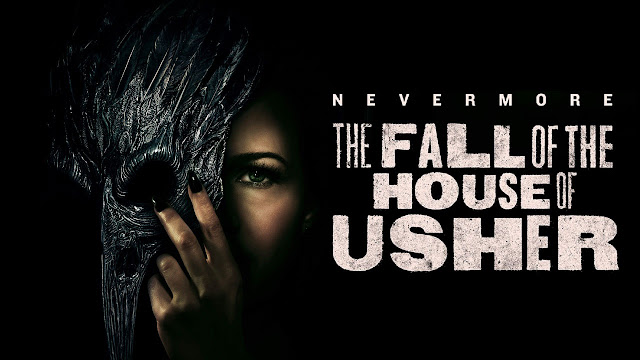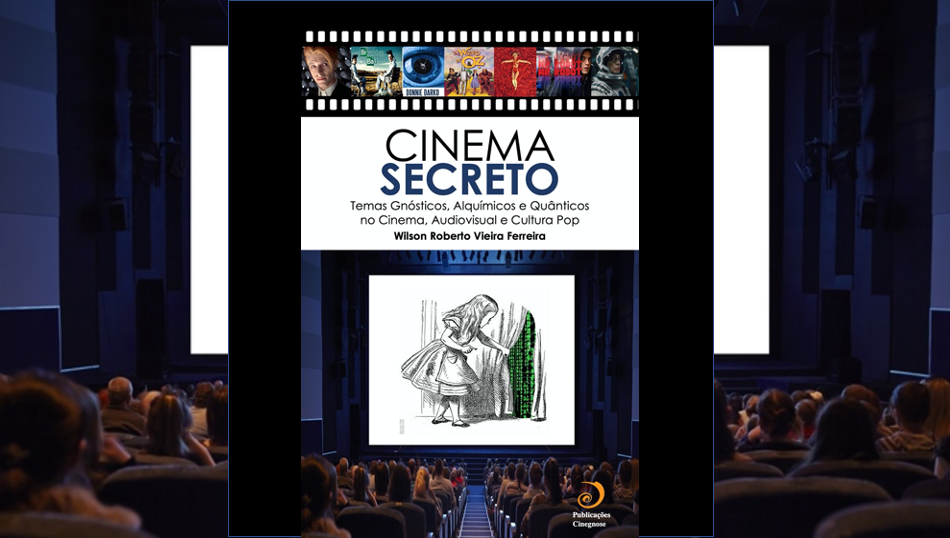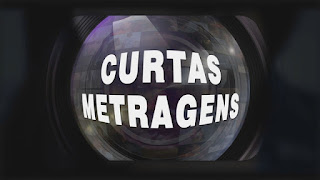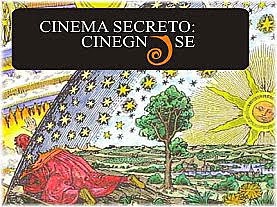 "I warned him" said Jack Nicholson after the death of Heath Ledger, the interpreter of the Joker in The Dark Knight (2008). What I meant Nicholson with this warning? Like the archetypal psychopath, the Joker summarize not only as the thought-forms become autonomous and powerful current in pop culture but also, as Hollywood becomes the main catalyst of these psychic energies.
"I warned him" said Jack Nicholson after the death of Heath Ledger, the interpreter of the Joker in The Dark Knight (2008). What I meant Nicholson with this warning? Like the archetypal psychopath, the Joker summarize not only as the thought-forms become autonomous and powerful current in pop culture but also, as Hollywood becomes the main catalyst of these psychic energies.
The post below appeared in the blog of Jason Horsley Aeolus Inc. In this post, we have a practical example of analysis of what he calls "Synchromysticism": a proposal for analyzing not only the product film, but film production and audiences by reference of Schizophrenia, Shamanism, the development of archetypes (Jung) and Theosophical concepts like the "thought-form" of Blavatsky and Leadbeater. This post is the first part of its analysis surrounding the death of actor Heath Ledger and the last character who performed it, the Joker from Batman film series. For Horsley, the Joker is the archetypal psychopath, a Thought Form capable of owning contemporary actors and audiences, most of the autonomous entities manipulated by the Hollywood industry. Horsley dangerously transits between conspiracy theories and mysticism as a reference tool to understand phenomena of communication today.
However, it is worth following his arguments critically. At least, it can be fun. Soon we will publish the second part of the analysis Horsley about Heath Ledger and the Joker:
The Hollywood Entity Smogasbord
After Heath Ledger’s death, Jack Nicholson made the cryptic remark: “I warned him.”
What exactly did Nicholson warn Ledger about? It seems likely, given the context, that Nicholson was referring to the potentially deranging effects of playing a psychopath with such extreme qualities as the Joker. The Joker is not merely a psychopath but an archetypal psychopath: in the ranks of popular cultural thought-forms or 20th century tulpas, he is practically a god. (Research for the first Batman movie claimed that the bat insignia was the second most recognizable symbol to kids, after the smiley face.)
If I am right in presenting the idea that fictional creations become semi-autonomous, even semi-conscious, entities within the Imaginal realms, via the psychic energy we give to them (an idea Neil Gaiman plays with in Sandman, and Alan Moore with Promethea), then presumably, the more popular a character becomes—the more narratives are spun around it—the “stronger,” the more powerful and autonomous, the tulpa would become? Think of Father Christmas or Jesus Christ. Whatever odd mix of myth, legend, and historical fact lies behind these characters, they are profoundly real in their effects, and not just in our psyches but through our actions. Parents even pretend to be Santa to maintain the illusion.
In The Manson Secret, Peter Levenda touches on the parallels between method acting (the Stanislavsky method) and the creation of “alters” via mind control programming—in other words, between the assumption of roles as a performer, and the fragmentation of the psyche as seen in multiple personality disorder, etc. In the old days, however—and even today in more shamanic cultures—what we term schizophrenia and “MPD” would more likely be understood as a kind of entity-possession. When trauma—either induced via abuse or other forms of “handling” or self-induced via drugs, magikal rituals, or acting techniques—creates an opening or fracture in the psyche, external forces can enter in and assume control of that psyche. One could also say that, by tapping into the unconscious mind, suppressed and disowned aspects of the psyche—both daimonic and demonic—emerge and take over consciousness. The shamanic view sees the forces as external and demonic, the psychological view sees them as internal, pertaining to the psyche. But the basic description is the same, as is the end result: loss of control, madness, despair, or, in rare cases, initiation and illumination, and maybe an Oscar-winning performance!
I already described how actors might be chosen as vessels or conduits—“strange attractors”—by which psychic energy could be drawn off and redirected toward the creation of thought-forms. These thought-forms would not be under the control of the actor, much less the audience (whose psychic energy they are made up of), but rather that of a third, unseen element: a power, let’s say, hidden behind the scenes. Thus these thought-forms would seem to be autonomous, since they are being directed by an outside intelligence independent of their apparent source. Something similar may occur in the cases of MPD and indeed, of actors submersing themselves in a role. It almost indubitably does occur in the case of mind control victims.
When an “alter”—a fragmented aspect of the psyche that has been compartmentalized and become independent—is created, it is effectively cut off from the controlling intelligence of the psyche. Since nature abhors a vacuum, something is inevitably drawn to fill the space, to take hold of the disowned fragment, and to steer and direct it, perhaps even to inhabit it. So in behavioral modification, a subject’s fragment “alter” is programmed and trained as a spy, assassin or sex slave, and this becomes its whole identity and function. Essentially it is then acting upon—as an embodiment of—the will of another, external agency. The same can be said, in religious terms, when demons possess a body and “oust” its soul: a person becomes split into two or more personalities, one of which remains unconscious of the other, and so they begin to act out their “Shadow” in aberrational ways. We say of such a person that they are “possessed,” or are “not themselves,” or simply that they are “out to lunch.” Shamanically speaking, entities (which may themselves be thought-forms created by the person, or by others connected to them, such as “ghosts,” “ancestors,” and suchlike) await such an opportunity to assume control of a person’s psyche and inhabit their body. This can occur in dramatic ways—crimes of passion, mental breakdown, etc—or in subtler but far more prevalent ways, such as compulsive behavior, substance addiction, sexual abuse, and suchlike.
Of all the feeding grounds we might imagine for entities, it’s hard to conceive of a richer, more abundant and varied one than that of Hollywood—where compulsive and extreme behavior is the norm, and where the creation and assumption of alternate personalities and the weaving and pursuing of fake narratives—the deliberate disassociation from reality—is the nature of the business.
 The fact that the film be a Gnostic tendency eminently American is the result of a peculiar mix of religion and mysticism with origins in popular literary forms in that country since the eighteenth century Puritanism passing through periodic revivals of religion and mysticism as Mormons and Pentencostal at the turn of the nineteenth century to the techno-mysticism originated in the 60s.
The fact that the film be a Gnostic tendency eminently American is the result of a peculiar mix of religion and mysticism with origins in popular literary forms in that country since the eighteenth century Puritanism passing through periodic revivals of religion and mysticism as Mormons and Pentencostal at the turn of the nineteenth century to the techno-mysticism originated in the 60s. 






 segunda-feira, dezembro 28, 2009
segunda-feira, dezembro 28, 2009
 Wilson Roberto Vieira Ferreira
Wilson Roberto Vieira Ferreira




















![Bombas Semióticas na Guerra Híbrida Brasileira (2013-2016): Por que aquilo deu nisso? por [Wilson Roberto Vieira Ferreira]](https://m.media-amazon.com/images/I/41OVdKuGcML.jpg)
















